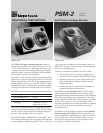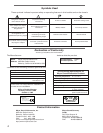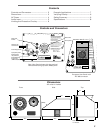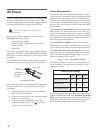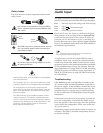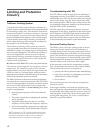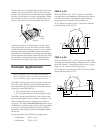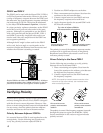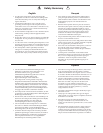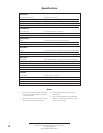
6
Limiting and Protection
Circuitry
TruPower Limiting
System
Conventional limiters assume that the resistance of a
speaker remains constant and set the limiting threshold
by measuring voltage only. This method is inaccurate
because the speaker’s resistance changes in response
to the frequency content of the source material and
thermal variations in the speaker’s voice coil and magnet.
Conventional limiters begin limiting prematurely,
which under-utilizes system headroom and deprives
the speaker of its full dynamic range.
The TruPower limiting (TPL) system accounts for
varying speaker impedance by measuring current, in
addition to voltage, to compute the power dissipation
and voice coil temperature. TPL allows the speaker to
deliver its highest SPL across its entire frequency
range during limiting, eliminates long-term power
compression, protects the drivers, and extends the
lifetime of all components.
Hi Limit and Lo Limit LEDs on the user panel indicate
TPL activity for the high and low frequency drivers,
respectively. The limiters for each driver function
independently and do not affect the signal when the
LEDs are inactive. Limiting begins when the driver
temperature exceeds the maximum safe level and ceases
when the temperature returns to normal.
The PSM-2 performs within its acoustical specifications
and operates at a normal temperature if the TPL LEDs
are on for no longer than two seconds, and off for at least
one second. If the LEDs remain on for longer than
three seconds, the PSM-2 is hard limiting with these
negative consequences:
• Increasing the input level will not increase the
volume.
• The system distorts due to clipping and nonlinear
driver operation.
• Unequal limiting between the low and high
frequency drivers alters the frequency response.
• Driver and amplifier components are subjected
to maximum heat, which shortens their life span.
NOTE: Although the TPL limiters exhibit smooth sonic
characteristics, we do not recommend using them for
intentional compression effects. Use an outboard
compressor/limiter to compress a mixed signal.
Troubleshooting with TPL
The TPL LED can indicate serious driver problems, if
interpreted correctly. If one PSM-2 in a system exhibits
substantially more TPL activity than others receiving the
same audio signal, then the driver associated with
the excessively active LED may have a short circuit. This
is a potentially dangerous condition for the electronics;
shut the PSM-2 down immediately.
The TPL circuit does not activate if there is no power
dissipation in the driver, regardless of the input signal
level. Therefore, if all PSM-2s in a system receiving the
same audio signal exhibit TPL activity except one,
then that unit may have an open voice coil; disconnect
it and contact Meyer Sound for repair information.
Fans and Cooling System
The PSM-2 uses a forced-air cooling system with two
fans to prevent the amplifiers from overheating. A
variable-speed primary fan runs continuously with an
inaudible operating noise of 22 dBA at 1 m at its slowest
speed. The speed of the primary fan begins increasing
when the temperature of the heatsinks reaches 42°C.
The fan reaches full speed at 62°C and is barely audible
near the cabinet, even without an audio signal.
In the unusual event that the temperature reaches
74°C, the secondary fan turns on and is clearly audible.
The secondary fan turns on in response to
• primary fan failure (check its status immediately);
• high source levels for a prolonged period in hot
temperatures or direct sunlight;
• driver failure.
The secondary fan turns off when the temperature
decreases to 68°C.
In the highly unlikely event that the secondary fan
does not keep the temperature below 85°C, the PSM-2
automatically shuts down until AC power is removed
and reapplied. If the PSM-2 shuts down again after
cooling and reapplying AC power, contact Meyer
Sound for repair information.



